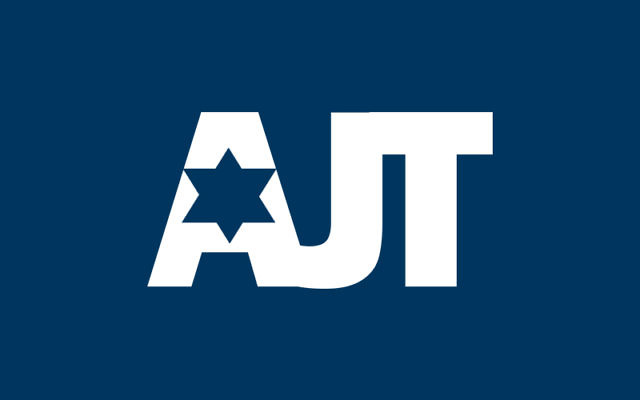Bridging the Muslim-Jewish Divide
By Tiffany Parks
Many people believe that Jewish-Muslim conflicts are too tense and complex to solve.
But a group of Jews and Muslims gathered at the Clarkston Community Center in Clarkston on May 17 to tackle the conflict in an innovative way. The focus of the gathering, which was hosted by the American Jewish Committee and its Muslim-Jewish Dialogue, was the fourth and final installment of the documentary series “Jews and Muslims: Intimate Strangers.”
“The documentary was well made. The rare archival footage of the 1948 transitional period to the Israeli state was impressive,” Clarkston Mayor Ted Terry said. “As art gets more sophisticated, the way people express themselves evolves, and our human understanding of each other evolves as well.”
What the film did well was dredge up and expose raw feelings about culture, power and history among the participants.
“I realized watching the film that the notion of disgrace kept coming up on the Muslim side. I don’t think Jews had that mind-set after the Holocaust or when they were expelled from Muslim countries. That’s why they were able to move forward. I think it’s ego that’s holding back the peace process,” said Rick May, a Jewish member of the Muslim-Jewish steering committee.
Soumaya Khalifa, a Muslim member of the steering committee, responded by explaining to May the concept of saving face in the Muslim community. “When a parent tells a child he will have a homeland and that homeland is never realized, it is considered a terrible shame in the Muslim community because pride of the community is important.”
Sheila Adelman, a retired retailer, said she had an epiphany about both groups as she watched the film. “I learned how painful it must have been in 1948 for the Arabs to be displaced, and then Jews were displaced all around Europe at the same time. Both races have had similar painful experiences, but they haven’t collectively shared these experiences in large numbers.”
What was obvious to Lesley Dixon, one of the group facilitators, as he mingled with the participants was that Jews and Muslims in America are poised to be dynamic leaders of the peace process.
“All around the room, Jews, Muslims and other denominations were debating and sharing their passions and personal experiences to connect with each other on a much higher, interpersonal level,” Dixon said.
The interfaith connection among the participants was the desired outcome for the AJC organizers.
The AJC, Regional Director Dov Wilker said, “is the only entity having this bilateral conversation in Atlanta.”
“When we gather people from these faith communities for dinner, discussion and a movie about our shared history, good feelings are the order of the day,” said Sandra Cuttler, the co-chair of the steering committee.
More than 400 Jews and Muslims attended at least one of the four segments of “Intimate Strangers.”
“Clarkston does not really have a high Jewish population. It has a higher Muslim population,” Terry said. The fact that so many Jews came from elsewhere in metro Atlanta to participate in the dialogue proves how dedicated they are to such interfaith relationships.
A symbol of the potential for progress between Jews and Muslims in America was the location of the event in a formerly segregated high school.
“The Clarkson Community Center was once a white segregated high school. It opened in 1924 and closed in 1966. It was never desegregated,” Cuttler said. “By having this event, it’s like making things right. It’ll take a few more decades of hosting positive events to bring things full circle from the beginning of its opening to the closing.”
Wilker said the AJC wanted to host the event in a neutral space that also had a history. People are more relaxed in secular locations.
This first local effort at Muslim-Jewish conversations was not flawless. At each of the four sessions, even one held at a mosque, Jews far outnumbered Muslims among the participants, few of whom were young adults.
But Cuttler said: “The tangible results of these initiatives are indicated by the ability of Jews and Muslims in the group to have meaningful conversations about contentious issues such as ISIS, Iran, state-sponsored terrorism, and relations between states, ethnic groups and religious communities in and around the Holy Land. This is no small accomplishment when one considers that the AJC is an officially Zionist organization that supports the state of Israel, and many Muslim participants are active supporters of the Palestinian cause.”
One sign that the event was fertile ground for interfaith collaboration and connectivity occurred at the end when Adelman introduced her husband, David, to Soumaya Khalifa. She loves jewelry, and he owns a jewelry store. They exchanged numbers.
The AJC hopes to look back one day and proclaim that it was on the forefront of something big, just as the Student Nonviolent Coordinating Committee and the Council of Federated Organizations were to blacks and whites during the civil rights movement in the 1960s.
“The next project that the AJC is planning is a service project in the garden of the Clarkston Community Center, to be followed that day by a joint discussion of the Jewish teaching of tzedakah and the Muslim teaching of sadaqa,” Cuttler said. “The AJC is also planning for a future educational program of five to six sessions using the book ‘Sharing the Well: A Resource Guide for Jewish-Muslim Engagement.’ The book is the result of an interfaith project with contributions from the Jewish Theological Seminary, Hartford Seminary and the Islamic Society of North America.”
“There will be ups and downs for the AJC, but the long-term goal has to remain there,” Terry said. “You don’t do the work they are doing to win medals. You do it because it is the right thing to do.”





comments